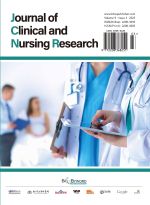Abstract
Dysphagia caused by true bulbar paralysis after stroke is a common and serious complication that severely affects patients’ eating ability and quality of life, and significantly increases the risk of complications such as pneumonia and malnutrition. Electroacupuncture at swallowing points stimulates Swallowing 1 and Swallowing 2 acupoints, acting on key areas such as the glossopharyngeal nerve and vagus nerve, stimulating the reconstruction of nerve reflex arcs and the recovery of swallowing function. Therefore, this article analyzes the mechanism and clinical efficacy of electroacupuncture at swallowing points for the treatment of dysphagia caused by true bulbar paralysis after stroke, aiming to provide theoretical support and practical basis for clinical application.
References
Li W, Meng R, Zhang G, et al., 2014, Relationship Between Brain Injury Location and Swallowing Disorder in Patients with Acute Stroke. Chinese Journal of Geriatrics, 33(11): 1179–1182.
Bian H, Liu J, Han P, 2024, Effects of Electronic Biofeedback Therapy Combined with Swallowing and Speech Diagnosis and Treatment Device on Language Function in Elderly Patients with True Bulbar Paralysis and Swallowing Disorders After Cerebral Infarction. China Medical Herald, 21(16): 86–88, 96.
Qi C, 2024, Observation on the Effect of Acupuncture at Acupoints Based on TCM Syndrome Types on Neurological Function in Patients with Swallowing Dysfunction After Stroke. Journal of Shandong Medical College, 46(3): 92–94.
Duan X, 2024, Clinical Effect of Yiqi Tongluo Xingnao Decoction Combined with Acupuncture in the Treatment of Swallowing Disorders After Stroke. Rational Drug Use in Clinic, 17(28): 57–59.
Ru Y, Zhao D, 2024, Observation on the Clinical Effect of Jieyu Decoction Combined with Acupuncture in the Treatment of Swallowing Disorders After Stroke. Clinical Research, 32(10): 121–124.
Li S, 2023, Effects of Swallowing Mirror Video Combined with Swallowing Function Training on Patients with True Bulbar Paralysis and Swallowing Disorders After Stroke. Modern Medicine & Health, 39(12): 2054–2057.
Xiao W, Li X, Lu S, et al., 2023, Meta-Analysis of the Efficacy and Safety of Repetitive Transcranial Magnetic Stimulation in the Treatment of Central Neurogenic Swallowing Disorders. Clinical Focus, 38(7): 588–599.
Lu Y, 2017, Observation on the Curative Effect of Neuromuscular Electrical Stimulation in the Treatment of Swallowing Disorders After Stroke. Inner Mongolia Medical Journal, 49(1): 66–67.
Zhao Y, Lu H, 2020, A Case Report of Tongue Three-Needle Acupuncture as the Main Treatment for True Bulbar Paralysis After Brainstem Infarction. Chinese Folk Therapy, 28(10): 99–100.
Liu H, Wu X, Xiong C, et al., 2024, Application of Pharyngeal Three-Needle Point Pressing Combined with Feeding-Swallowing Training in the Rehabilitation Treatment of Patients with Swallowing Disorders After Stroke. Sichuan Journal of Traditional Chinese Medicine, 42(7): 195–198.
